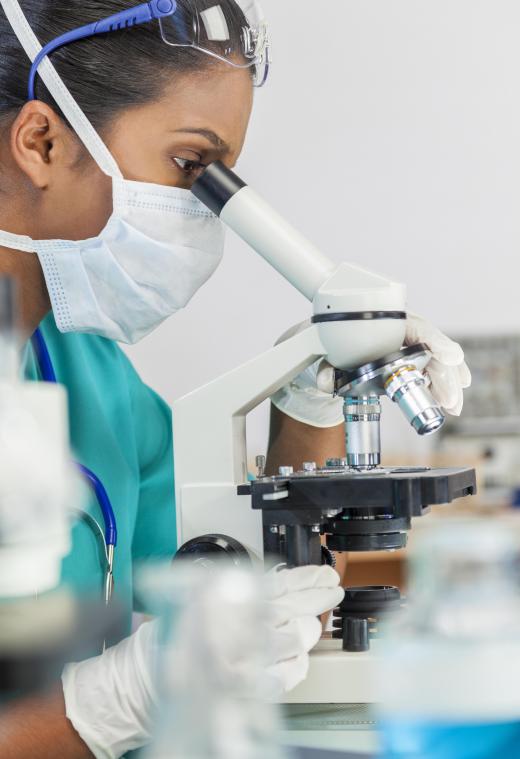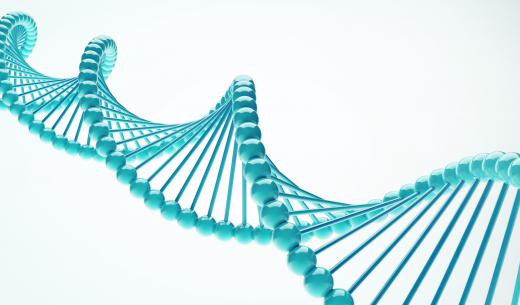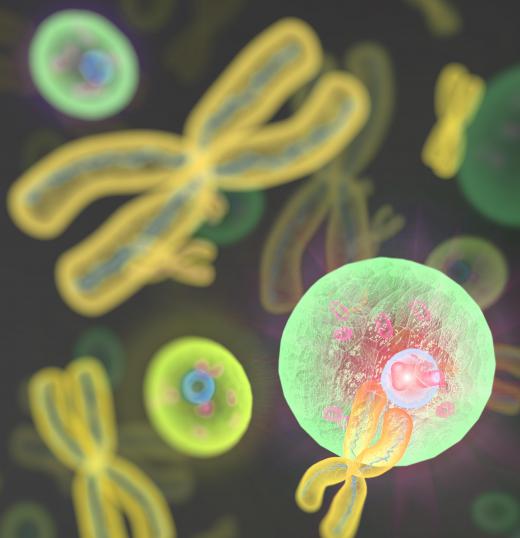What is a Bacterial Genome?
A bacterial genome is the collection of a bacterium's entire genetic information. Essentially, it determines how a bacterium looks and functions, both externally and internally. This genetic information is organized into genes, which are encoded in the organism’s deoxyribonucleic acid (DNA). Those genes are further organized into chromosomes. In fact, the word “genome” is actually a combination of the words “gene” and “chromosome.” Although there are many different variations of how genomes are structured in different organisms, all bacteria are haploid, meaning they possess only one chromosome. Thus, all the genetic information contained in a bacterial genome is contained in a single chromosome.
A bacterium’s chromosome is composed of base pairs of nucleotides, the basic structural components of DNA. Only four nucleotides exist in DNA — adenine, thymine, guanine, and cytosine. These nucleotides always bond together in the same way — adenine bonds with thymine and guanine bonds with cytosine. All four together form what is known as a "base pair."

Bacterial genomes might contain any number of base pairs. Some bacterial genomes contain less than 200,000 base pairs, while others contain over 12 million base pairs. Consequently, the number of genes found in bacteria is highly variable, with anywhere between 575 and 5,500 genes reported in bacteria, depending on the species. As a comparison, the human genome contains over 3 billion base pairs and approximately 23,000 genes.

Interestingly, most bacterial genomes are organized into a circular chromosomal structure. Humans, by contrast, have a linear chromosomal structure. The circular structure of a bacterial genome, however, enables its DNA replication to start and stop at the same location — a feature not seen in the linear genomes of other organisms.
As organisms that reproduce asexually, bacteria are essentially clones with identical DNA to their parent’s genome. Changes to a bacterium’s genome, also known as evolution, can be brought by either genetic recombination or mutations. Mutations can occur either through errors made in DNA replication or by exposure to mutagens that affect how nucleotides interact with each other. Bacteria can also exchange and recombine genetic information with each other through separate processes known either as transformation, transduction, or conjugation, depending on how the genetic exchange occurs. Changes to a bacterium’s genome can result in the formation of a new species.

DNA sequencing is the determination of the order of nucleotides in an organism's DNA. This information has been a key component in biological research. The first bacterial genome to be fully sequenced was that of Haemophilus influenzae, which can cause a variety of opportunistic diseases such as pneumonia, meningitis, and respiratory infections. It was successfully sequenced in 1995 by The Institute for Genomic Research. Since this breakthrough, hundreds of bacterial genomes have been sequenced and scientists continue to research and sequence the genomes of other bacteria.
AS FEATURED ON:
AS FEATURED ON:















Discussion Comments
@ Ceptorbi, genome sequencing has led to reverse vaccinology to help fight disease-causing bacteria. Traditional vaccines use weakened or dead forms of the whole microorganism. Reverse vaccinology, in contrast, uses only part of the disease-causing organism instead of the whole organism. The vaccines developed by this technique are called subunit vaccines due to the use of subunits of the pathogen rather than the entire organism. Genome sequencing identifies genes encoding proteins that can potentially be used as vaccine components. While originally used to develop a vaccine for Serogroup B meningococcus, this technique is being used to develop vaccines for many other bacteria.
Has bacterial genome sequencing led to any medicines or vaccines that could help fight disease-causing bacteria?
Post your comments